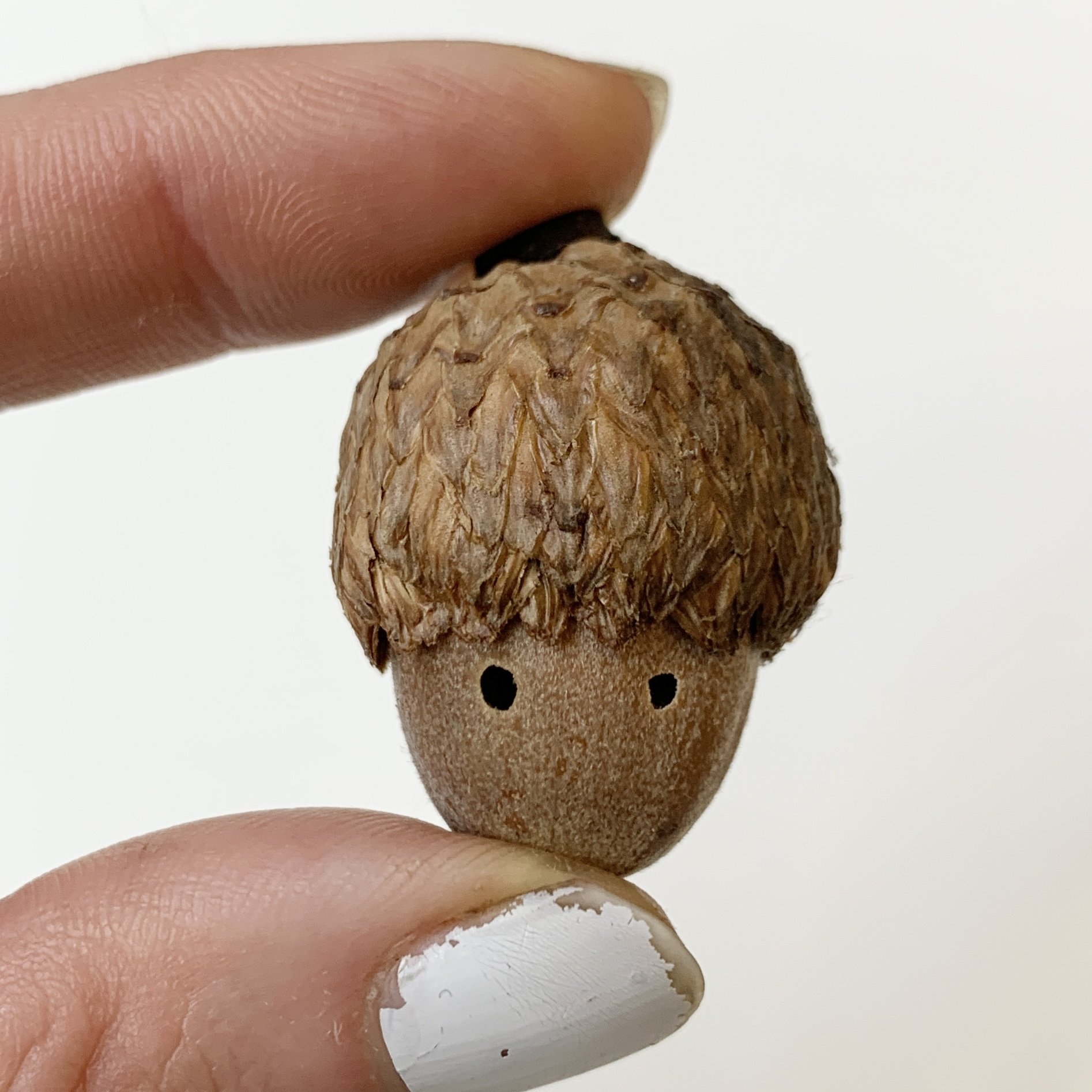Milking Acorns - Tannin Solution
It’s Fall in Northern California and I’ve been watching the acorns grow and ripen. Black Oak acorns have been dropping from the trees for weeks and the Live Oak acorns are plumping up for the picking. Every morning on my walk I gather a pocket full, leaving the acorns with tiny holes on the ground. These have been the home of acorn weevil larva The meat of the acorns has already been eaten. I gather from both the ground and the trees. I use black oak acorns mostly because they’re everywhere by my house. I also have handfuls of interior live oak acorns. All acorns contain high amounts of tannins and can be used for making a tannin solution. So if you have access to Live Oaks, Black Oaks, Red Oaks, White Oaks, Pin Oaks, or Oregon oaks get gathering!
Tannins are particularly useful when dyeing cellulose fibers. The addition of tannins in the mordanting process will increase lightfastness and color saturation. I’ve started to experiment with mordanting cellulose fibers with just tannins when using plant matter such as tannin-rich maple leaves. I’m hoping to get more color saturation without the use of aluminum acetate, which can shift the color. What I like about the tannins you get from acorns is they’re almost colorless, creating the perfect blank canvas for color.
What You Need
1 lb. of acorns
Hammer or smooth rock that fits comfortably in your hand for cracking acorn shells.
Wide-mouthed glass gallon jar or non-reactive vessel
Extracting tannins from acorns is easy
Remove the caps and shell the acorns by pounding and cracking their exterior with a rock or hammer. Peel the shell off and add it to the pile of acorns caps. I use the caps and shells to make lovely tans and soft grays with the addition of iron or rust water.
Place the acorn meat into a food processor and pulse them into a fine meal. Put the acorn meal into the nut milk bag. Place the bag into your container. I fasten the top of the bag to the lip of the jar with a rubber band or clothespin. Using a faucet or hose, turn the water on gently, think small stream. Let it drain through the bag and fill the container leaving some room. Let it soak for 5 minutes.
Pull the bag out while squeezing it at the same time. You should see a thick cloudy substance draining out - these are the tannins. Continue squeezing until all the liquid has been released. Gently run a little more water over the bag and give it another squeeze. You should have 3/4 of a gallon of strong tannin solution. This needs to be kept in the fridge or in a cool dark place otherwise it will ferment. I usually use mine within a couple of weeks so I don’t know how long you can actually store it in the fridge. You can also get some of those big silicone ice cube trays and freeze it.
If you want to make acorn flour, you’ll need to remove all the tannins. I suggest reading THE BEST WAY TO MAKE ACORN FLOUR by James Beard Award-winning author and chef Hank Shaw.
Mordanting
Since there is no way of measuring the strength of your tannin solution, this is my general guideline for the amount of cellulose fabric to tannin solution.
In a large no reactive pot, dilute your tannin solution with enough water so the fabric can move around freely. Heat tannin solution to 120 F. Give it a stir, put the lid back on, turn off the heat. Allow the fabric to soak for 2-4 hours, giving it a stir every now and then. Remove your fabric giving it a good squeeze. gently rinse with cool water and hang to dry.
I re-use the solution a couple of times. The less cloudy the fewer tannins. When I’m done mordanting my fabric I use the leftover liquid to make a dye vat. Sometimes I add a little ferrous sulfate or homemade iron water to create beautiful shades of gray.

